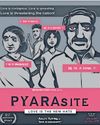
On the morning of November 4, only hours after he declared at a news conference, sniffling and in tears, that the time was right for Marathas to exact vengeance on the Maharashtra government for the economic hardships heaped on the agrarian community, Manoj Jarange Patil returned to face the news crews again. “It is not possible to contest on the basis of only one community,” he said. Muslim and dalit parties, who he had been in talks with until 3am, had not sent lists of candidates they were to jointly back.
Across the Marathwada region of Maharashtra, scores of Maratha candidates who had filed their nomination papers for the November 20 assembly elections were directed to withdraw from the fray. To a question on who or which party/alliance he would direct Maratha voters to reject, Jarange Patil said he would spell out his mandate soon.
Even without an edict from the leader of a series of statewide agitations seeking reservations for Marathas from within the Other Backward Classes quota, the morning announcement on the last date for withdrawal of nominations was an inflection point.
The anger of the Maratha community—almost 31 per cent of the state’s population—is considered one of the biggest factors in the Bharatiya Janata Party-led NDA’s poor show in the Lok Sabha elections this summer.
Amid the post-Haryana election political tailwinds for the Mahayuti combine of the BJP, the Shiv Sena (Eknath Shinde faction) and the Nationalist Congress Party (Ajit Pawar faction), Jarange Patil’s announcement indicated the possibility of a repeat, at least in some regions, of what the Maratha leader himself acknowledged as the Lok Sabha pattern.
This story is from the November 17, 2024 edition of THE WEEK India.
Start your 7-day Magzter GOLD free trial to access thousands of curated premium stories, and 9,000+ magazines and newspapers.
Already a subscriber ? Sign In
This story is from the November 17, 2024 edition of THE WEEK India.
Start your 7-day Magzter GOLD free trial to access thousands of curated premium stories, and 9,000+ magazines and newspapers.
Already a subscriber? Sign In

POSTERS OF PROTEST
Appupen is a cartoonist who has published a few graphic novels, the latest being Dream Machine, about how AI can be a great 1 tool for an! authoritarian regime.

CLASH OF THE CIVILISATION
Even as the discovery of the Indus Valley Civilisation completes a century, some key aspects of this ancient culture remain mysterious, including its script. While the controversy over whether it was disrupted by an Aryan invasion may now be discredited, the debate over Indus ancestry and current links continues

A PROVEN PATHWAY TO PEACE
Low-cost, easy to implement, immediate results, and scientifically verified.

FOOTBALL GIVES THEM A KICK
For the children of Manipur and Mizoram, the great game is a way to a prosperous future

BATTLE FOR TOMORROW
Over the past decade, much has been said about India's potential as a leading global power.

THE TONGUE THAT TURNED
Why Greek survived while Latin and Sanskrit declined

USTAD ZAKIR HUSSAIN 1951-2024: HIS MUSIC WAS THERAPY TO THE WORLD
Flautist and Grammy co-winner Rakesh Chaurasia remembers the maestro

The magic of indigo
I really can't imagine why more of us don't throng Goa each December for the Serendipity Arts Festival alone. The festival, in its ninth year now, has the entire Panjim town celebrating.

NEW YEAR.NEW HOPE
EQUITY MARKETS HAVE TURNED VOLATILE OF LATE. WHAT TO EXPECT IN THE NEW YEAR

Seeking middle ground in Middle East
The collapse of assumptions is like the end of the world-or worldview. We assumed conwith the 20th century. But wars in Russia-Ukraine, Gaza, Yemen, Sudan, Somalia and Lebanon prove us wrong. Western defence officials now raise the nuclear threat level.